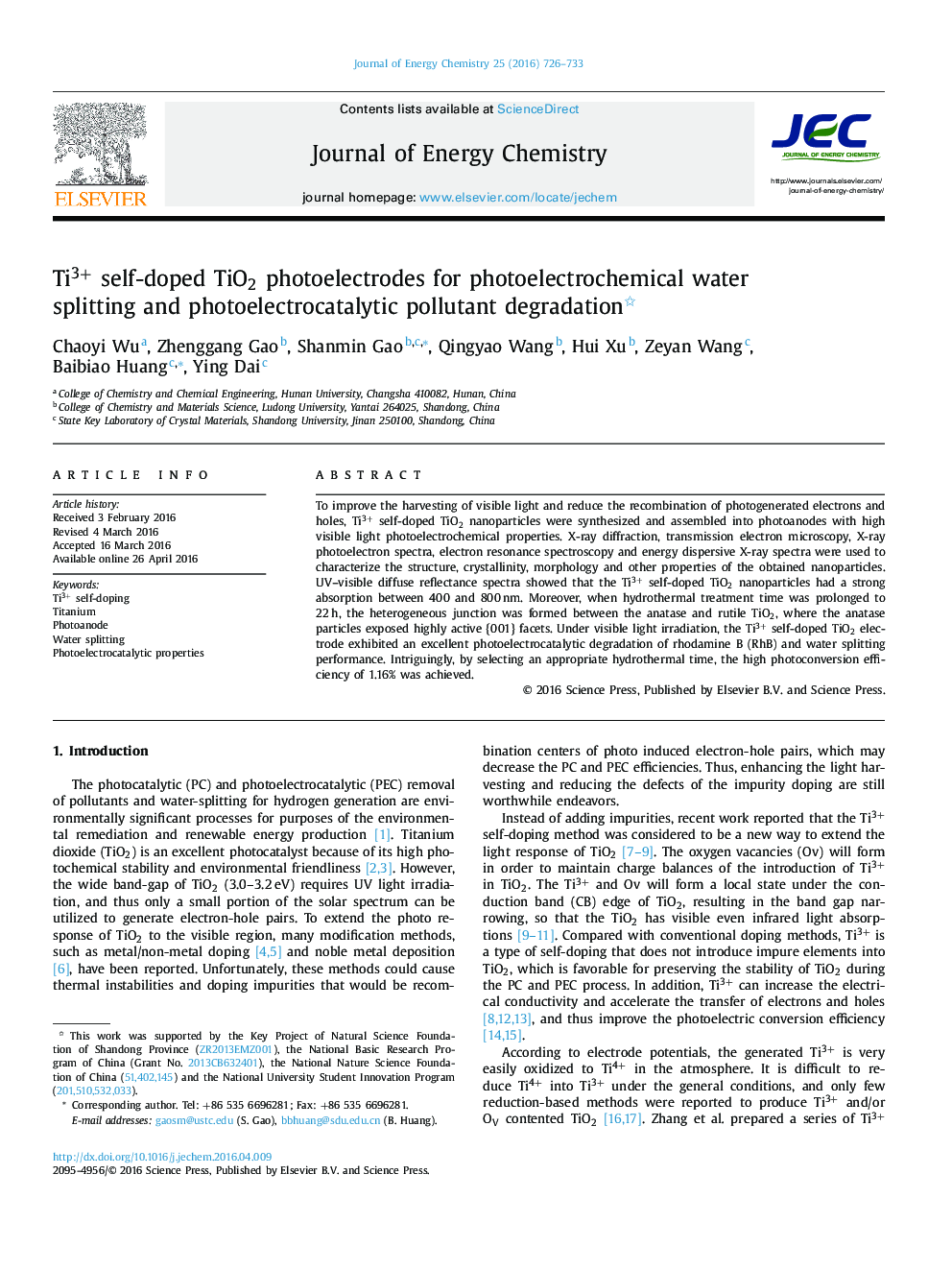| کد مقاله | کد نشریه | سال انتشار | مقاله انگلیسی | نسخه تمام متن |
|---|---|---|---|---|
| 63677 | 1419873 | 2016 | 8 صفحه PDF | دانلود رایگان |
To improve the harvesting of visible light and reduce the recombination of photogenerated electrons and holes, Ti3+ self-doped TiO2 nanoparticles were synthesized and assembled into photoanodes with high visible light photoelectrochemical properties. X-ray diffraction, transmission electron microscopy, X-ray photoelectron spectra, electron resonance spectroscopy and energy dispersive X-ray spectra were used to characterize the structure, crystallinity, morphology and other properties of the obtained nanoparticles. UV–visible diffuse reflectance spectra showed that the Ti3+ self-doped TiO2 nanoparticles had a strong absorption between 400 and 800 nm. Moreover, when hydrothermal treatment time was prolonged to 22 h, the heterogeneous junction was formed between the anatase and rutile TiO2, where the anatase particles exposed highly active {001} facets. Under visible light irradiation, the Ti3+ self-doped TiO2 electrode exhibited an excellent photoelectrocatalytic degradation of rhodamine B (RhB) and water splitting performance. Intriguingly, by selecting an appropriate hydrothermal time, the high photoconversion efficiency of 1.16% was achieved.
The photoanodes assembled by Ti3+ self-doped TiO2 nanoparticles exhibit more excellent photoelectrocatalytic activities for RhB degradation and water-splitting than pure TiO2 under visible-light irradiation.Figure optionsDownload as PowerPoint slide
Journal: Journal of Energy Chemistry - Volume 25, Issue 4, July 2016, Pages 726–733
